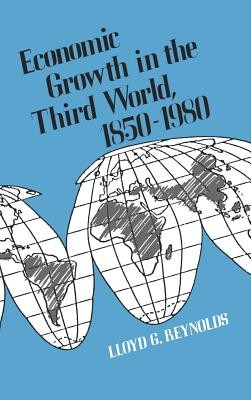
- We will send in 10–14 business days.
- Author: Lloyd G Reynolds
- Publisher: Yale University Press
- ISBN-10: 0300032552
- ISBN-13: 9780300032550
- Format: 16.5 x 24.3 x 3.9 cm, hardcover
- Language: English
- SAVE -10% with code: EXTRA
Reviews
Description
Recent years have seen an increasing body of literature on the economic histories of individual third world countries. This book by eminent scholar Lloyd G. Reynolds is the first to draw together this material and fit it into a systematic framework. Focusing on the forty-one largest countries in Asia, Africa, and Latin America, Reynolds shows that the third world has a rich historical record of growth and that its growth patterns bear some resemblance to those observed earlier in Europe and North America. Reynolds begins with a definition of economic growth, dividing it into three phases: the era of extensive growth, during which population and national output increase at about the same rate; the turning point, a decade or two that marks the beginning of a sustained rise in per capita output; and the era of intensive growth, marked by a continuing rise in per capita output. In chapters that deal with individual countries, Reynolds dates the turning point, explores the attendant economic and political circumstances, and outlines the key features of intensive growth from that point to the early 1980s. In the rest of the book, Reynolds analyzes such issues as why some countries reached the turning point much earlier than others; what role was played by political leadership, by opportunities for foreign trade, and by colonial rule or its absence; why certain countries grew faster than others; and what government can do to promote economic growth.
EXTRA 10 % discount with code: EXTRA
The promotion ends in 18d.22:38:35
The discount code is valid when purchasing from 10 €. Discounts do not stack.
- Author: Lloyd G Reynolds
- Publisher: Yale University Press
- ISBN-10: 0300032552
- ISBN-13: 9780300032550
- Format: 16.5 x 24.3 x 3.9 cm, hardcover
- Language: English English
Recent years have seen an increasing body of literature on the economic histories of individual third world countries. This book by eminent scholar Lloyd G. Reynolds is the first to draw together this material and fit it into a systematic framework. Focusing on the forty-one largest countries in Asia, Africa, and Latin America, Reynolds shows that the third world has a rich historical record of growth and that its growth patterns bear some resemblance to those observed earlier in Europe and North America. Reynolds begins with a definition of economic growth, dividing it into three phases: the era of extensive growth, during which population and national output increase at about the same rate; the turning point, a decade or two that marks the beginning of a sustained rise in per capita output; and the era of intensive growth, marked by a continuing rise in per capita output. In chapters that deal with individual countries, Reynolds dates the turning point, explores the attendant economic and political circumstances, and outlines the key features of intensive growth from that point to the early 1980s. In the rest of the book, Reynolds analyzes such issues as why some countries reached the turning point much earlier than others; what role was played by political leadership, by opportunities for foreign trade, and by colonial rule or its absence; why certain countries grew faster than others; and what government can do to promote economic growth.


Reviews